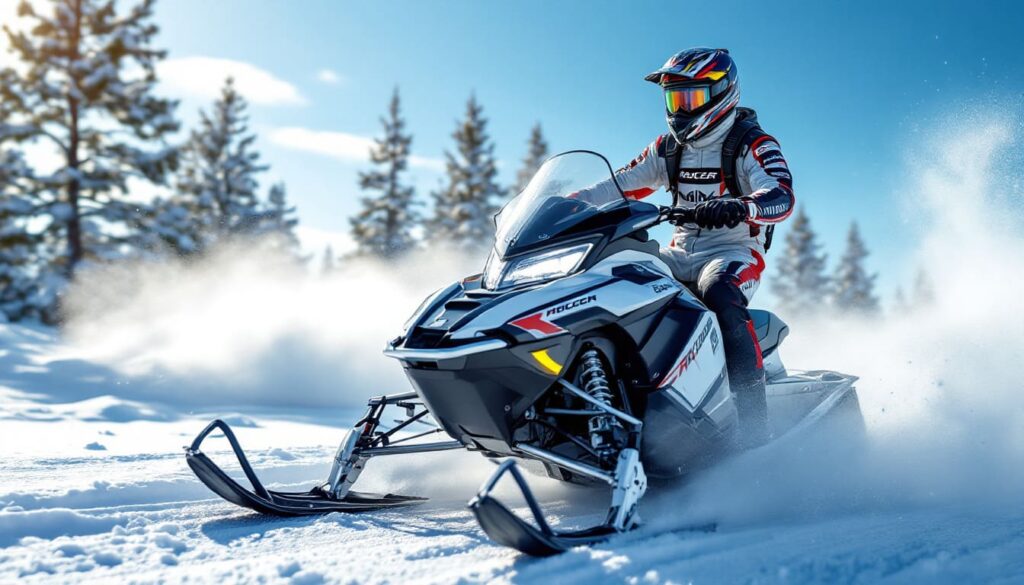Choosing the right oil for your engine is critical. This article breaks down the differences between 2-cycle and 4-cycle oils, offering fact-based, expert insights for powersports enthusiasts. Whether you’re maintaining a dirt bike, chainsaw, snowmobile, or lawnmower, this guide clarifies your options, helping you protect and optimize your engine.
How Two-Stroke and Four-Stroke Engines Work
Key Differences:
- Two-Stroke Engines:
- Complete a power cycle in two strokes (one crankshaft revolution.)
- Require oil to mix with fuel for lubrication.
- Deliver more power per weight but burn fuel less efficiently and produce higher emissions.
- Four-Stroke Engines:
- Complete a power cycle in four strokes (two crankshaft revolutions.)
- Use oil and fuel separately; oil lubricates the moving parts.
- Offer better fuel efficiency and fewer emissions but weigh more than two-stroke engines.
Matching the right oil to your engine type is critical since the lubrication needs differ significantly between these two designs.

What Makes 2-Cycle and 4-Cycle Oils Different?
2-Cycle Oil:
- Designed to mix with fuel; combusted during operation.
- Formulated with detergents to keep internal components clean and prevent deposits on power valves and exhaust systems.
- Essential for engines with higher operating temperatures and rapid RPM changes.
4-Cycle Oil:
- Not burned like 2-cycle oil—lubricates engine parts continuously.
- Includes additives for long-term wear prevention and engine protection.
- Keeps viscosity stable across a wide range of temperatures.
Expert Comparison: AMSOIL vs. Two Alternatives
1. AMSOIL DOMINATOR® Synthetic 2-Stroke Oil
Widely regarded as a high-performance option, AMSOIL DOMINATOR® offers:
- Strengths: Handles extreme heat and RPMs, suitable for racing or high-stress environments. Excellent deposit control.
- Weaknesses: Less value for casual users or low-intensity equipment.
2. Lucas Semi-Synthetic 2-Cycle Oil
A versatile, budget-conscious oil designed for general-purpose equipment.
- Strengths: Affordable and widely available. Works well for everyday tasks.
- Weaknesses: Moderate performance for engines under high-stress or temperature extremes.
3. Red Line Synthetic 2-Stroke Oil
Formulated for demanding applications requiring clean engine performance:
- Strengths: Superior deposit control and wear resistance. Performs well in both moderate and high-RPM environments.
- Weaknesses: Slightly less cold-weather stability compared to others.
Key Takeaway:
High-stress environments (like racing or extreme cold) demand elite products like AMSOIL or Red Line, while budget options like Lucas perform adequately for less intensive purposes.

Common Questions About 2-Cycle and 4-Cycle Oils
1. Can 2-cycle oil be used in a 4-cycle engine?
No. 2-cycle oil combusts with fuel and lacks the viscosity and additives necessary for 4-cycle engines.
2. How often should I change 4-cycle oil?
Follow the engine manufacturer’s guidelines, but typical intervals are every 25–50 hours of use.
3. What happens if I use the wrong oil type?
Using the wrong oil can lead to poor lubrication, increased wear, carbon deposits, and even engine failure. Always check your engine’s manual.
4. Are there environmentally friendly 2-cycle oils?
Yes, many brands now offer biodegradable 2-cycle oils designed to reduce environmental impact.
Actionable Tips for Choosing the Right Oil
- Match Oil to Equipment Use:
- High-performance needs like racing = synthetic oils like AMSOIL.
- General use or budget-friendly = versatile options like Lucas.
- Consider the Climate:
- Cold-weather performance is crucial for snowmobiles or other low-temperature applications.
- Regular Maintenance:
- Change oils as recommended and clean deposits regularly to prolong engine life.
- Read Labels Carefully:
- Terms like “synthetic” or “semi-synthetic” provide clues about performance and longevity.
Emission Standards and Oils
With a growing focus on emissions reduction, engine manufacturers are designing two-stroke engines that work with cleaner, low-smoke oils. This trend makes choosing high-quality oils more important than ever for both engine longevity and environmental stewardship.
Final Thoughts
The choice between 2-cycle and 4-cycle oil ultimately depends on your engine design, equipment usage, and environmental conditions. Brands like AMSOIL, Lucas, and Red Line each serve specific purposes, so understanding the requirements of your equipment ensures you select the right product.
Enhance your engine’s performance while protecting its longevity with high-quality oils tailored to its unique demands. Always refer to your equipment’s manual and prioritize trusted brands for consistent results.
